Most people are familiar with what asthma is and what it looks like, but did you know there are different types of asthma? Today we’ll walk you through two asthma types (extrinsic and intrinsic) and explore the similarities and differences between them.
Asthma - What Does It Mean?
Having asthma means having inflamed air passages that drastically narrow the airways which, as a result, limit the amount of oxygen that’s able to get into the lungs. Severe asthma presents with a number of unpleasant symptoms, and can even lead to an inability to talk and move actively. Regardless of what type of asthma you have, the majority of symptoms you experience will be the same.
What Are The Main Symptoms Of Asthma?
The most common symptoms of both extrinsic and intrinsic asthmas are the following:
- Coughing
- Wheezing
- Shortness of breath
- Rapid breathing
- Chest tightness
While the majority of people diagnosed with asthma experience almost all of the abovementioned symptoms, you might not have them all, or you may experience something in addition to the symptoms listed above. All patients are different and can develop individual asthma complications. The complete suite of your symptoms will depend on your age, weight, physical condition, stress level, lifestyle, and a number of other varying factors.
Extrinsic vs. Intrinsic Asthma: What Is The Actual Difference?
Probably many of you didn’t even know that asthma has two types: extrinsic and intrinsic, also referred to as allergic and non-allergic asthma. Although they’re two different types, the difference is pretty easy to explain.
1. What Causes Allergic Vs. Non-Allergic Asthma?
Extrinsic asthma is simply asthma caused by an allergic reaction, especially a chronic one. If your asthma is allergic, you will have higher levels of IgE (Immunoglobulin E) present in your blood test. On the other hand, intrinsic asthma, as you might’ve guessed already, is triggered by various non-allergic factors like stress, cold or dry air, smoke, anxiety, viruses or infections, and more.
2. What Type Is The Most Common?
More than 25 million people in the US suffer from asthma. Extrinsic asthma is definitely the more common of the two diseases since around 60% of all asthma sufferers have an allergic condition.
3. Who Is More Prone To Each Type?
Based on extensive research, experts in the medical world have been able to identify certain characteristics that are associated with sufferers of each asthma type. For example, allergic asthmatic patients are usually younger, while non-allergic ones tend to be older. This is explained by the fact that it’s harder to get non-allergic asthma while you are relatively young, as your organism is still strong and able to withstand many factors that would cause an older patient to get asthma. Surprisingly gender is also a factor, as the research claims that females are at higher risk to obtain a non-allergic type of asthma compared to males.
4. How Are Both Types Diagnosed?
Even though extrinsic and intrinsic asthmas have the same major symptoms, the diagnosis and treatment stages do differ for both conditions. In order to identify intrinsic asthma, your doctor will have to order a lung X-ray and blood work in addition to a thorough physical examination. Sometimes your physician will also want to perform a spirometry, peak flow, or lung function tests in order to figure out more details about your condition. After that, your doctor will have to perform an analysis on what factor(s) cause your non-allergic asthma. When it comes to diagnosing extrinsic asthma, your physician will likely order all of the abovementioned tests as well as a skin prick test, to see what your body perceives as an allergen.
5. How Is Each Asthma Type Treated?
After your doctor identifies the influencing factor(s) contributing to your intrinsic (non-allergic) asthma, recommendations for your specific triggers have to be made. These can include changes to your environment, nutrition, and lifestyle. Additionally, you may be prescribed various medications, including antibiotics and steroids, that are aimed at your infection and inflammation. If your asthma is triggered by stress or anxiety, psychological counseling may be required to treat your non-allergic asthma.
Extrinsic (allergic) asthma treatment is usually a tandem treatment approach and often consists of treatment for your asthma as well as your allergies. Asthma treatment will involve medications to reduce the inflammation which we’ve described above. At the same time, allergy treatment will depend on the allergen you are reacting to, as well as the severity of the symptoms. Note that some corrections in your nutrition and lifestyle can also be required, in addition to traditional allergy medicine.
Think You Might Be Suffering From Asthma?
There are lots of asthma resources online, both credible and non-credible, so don’t panic or rush to do a self-diagnosis after reading one or even dozens of them. Always remember that any condition requires professional diagnosis. If you experience any symptoms of extrinsic or intrinsic asthma, you can make an appointment with any of our experienced pulmonary specialists. They’ll walk you through all stages of the disease, from education to diagnosis and treatment.

